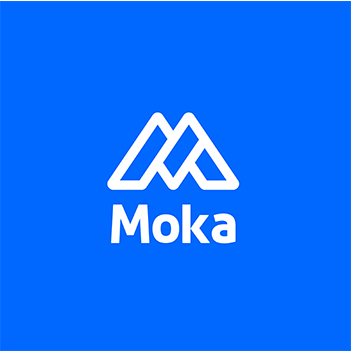How to Choose the Right Employee Referral Platform for Your Business

Choosing the right employee referral platforms can transform your hiring process. Why? Referred candidates are four times more likely to get hired than those from other sources. Plus, 82% of employers say referrals deliver better ROI. These platforms don’t just save you time—they also improve candidate quality. For instance, referred employees have a 45% retention rate after two years, compared to 20% for job board hires.
When evaluating employee referral platforms, focus on features that align with your goals. Look for ease of use, seamless integration, and tools that empower your team. The right choice can boost efficiency, cut costs, and help you build a stronger workforce.
Key Takeaways
Referral platforms help hire faster. Referred workers get hired in 29 days, saving time.
Referrals boost employee involvement. Workers feel important when they help hire others.
Referral platforms lower hiring costs. Referrals cost about $1,000, while other ways cost over $4,200.
Referred workers are better hires. They are 40% more likely to get hired and stay longer.
Pick an easy-to-use platform. Simple tools make more workers join the referral process.
Why Employee Referral Platforms Matter

Enhancing Recruitment Efficiency
Employee referral platforms can make your hiring process faster and more effective. Instead of sifting through hundreds of resumes, you get access to pre-vetted candidates recommended by your team. Did you know referred candidates are hired in just 29 days on average? That’s much quicker than traditional methods. Plus, these candidates are 350% less likely to be fired, which means you’re not just hiring faster—you’re hiring better.
A great example is Atlassian’s employee referral program. They focus on simplicity and rewards, which helps them attract top talent quickly. By using referral program software, you can streamline the process and save valuable time. This efficiency allows you to focus on other critical aspects of your business.
Statistic Description | Value |
|---|---|
Average hiring time through referrals | 29 days |
Likelihood of being fired for referred candidates | 350% less likely |
Retention rate for employers using referrals | 46% |
Boosting Employee Engagement
When you build an employee referral program, you’re not just improving recruitment—you’re also boosting morale. Employees feel valued when their opinions matter, and 32% of them are willing to recommend talent to help their company. This sense of involvement fosters a stronger connection to your organization.
Referral programs also encourage collaboration. Canva, for instance, uses its employee referral program to promote diversity. Employees are motivated to refer candidates from different backgrounds, which creates a more inclusive and innovative workplace. By using referral program software, you can make it easy for your team to participate and feel like an integral part of your hiring strategy.
Tip: Recognize and reward employees for successful referrals. This small gesture can go a long way in keeping your team engaged.
Reducing Hiring Costs
Hiring can be expensive, but employee referral platforms help you cut costs significantly. Traditional recruitment methods, like job ads and external agencies, can cost anywhere from $4,200 to $18,000 per hire. In contrast, referrals typically cost around $1,000 per hire, saving you thousands of dollars.
Referrals also lead to better retention rates. Employers using referrals see a 46% retention rate, compared to just 33% for those relying on career sites. This means fewer resources spent on rehiring and training. Plus, referred employees generate 25% more profit for their companies, making referral programs a smart financial choice.
Referrals can save businesses $3,000 per hire or more.
Companies avoid costs associated with advertising and unqualified hires.
82% of employers say referral programs offer the best ROI.
By investing in the right referral program software, you can reduce hiring costs while building a stronger, more committed workforce.
Improving Candidate Quality
When it comes to hiring, quality matters just as much as speed. Employee referral platforms help you find candidates who are not only skilled but also a great fit for your company culture. Why? Because your employees know what it takes to succeed in your organization. They’re more likely to recommend people who align with your values and goals.
Referred candidates consistently outperform those hired through other methods. They’re 40% more likely to get hired and five times as likely to stay in their roles long-term. This means fewer headaches for you when it comes to turnover and rehiring. Plus, referred employees are 350% less likely to get fired, which speaks volumes about their quality.
To measure candidate quality effectively, you need actionable metrics. Here are some key ones to track:
Metric | Description |
|---|---|
Referral rate | Percentage of hires from referrals compared to total hires. |
Quality of hire | Performance and retention of referred employees versus those hired otherwise. |
Time to hire | Average time taken to fill positions through referrals. |
Retention stats | Percentage of referred employees who stay with the company after a period. |
Cost per hire | Total costs associated with hiring through referrals compared to other methods. |
These metrics give you a clear picture of how referrals improve hiring outcomes. For example, referred employees often stay longer and perform better, which boosts your team’s overall productivity.
Tip: Encourage your employees to refer candidates they truly believe in. This ensures you’re building a team of high-quality, committed individuals.
By using employee referral platforms, you can tap into a pool of candidates who are pre-vetted and ready to contribute. It’s a win-win for both you and your team.
Key Features of an Employee Referral Platform

User-Friendly Design
A user-friendly design is the backbone of any successful employee referral platform. If your team struggles to navigate the system, they’re less likely to use it. That’s why ease of use is so important. A platform with an intuitive interface ensures employees can quickly refer candidates without confusion or frustration.
Metrics like task success rate and error rate highlight the importance of usability. For example, a high task success rate means employees can complete referrals without issues. Similarly, satisfaction scores reflect how much your team enjoys using the platform. Tools with a clean layout and clear instructions often score higher in these areas.
Tip: Look for platforms that offer features like drag-and-drop functionality or guided workflows. These small details can make a big difference in user experience.
Metric | Description |
|---|---|
Task Success Rate | Measures the percentage of correctly completed tasks by users. |
Time on Task | Evaluates the average time users take to complete a task. |
Error Rate | Indicates the frequency of errors made by users during tasks. |
Satisfaction Scores | Reflects users' overall satisfaction with the product or service. |
Integration with HR Systems
Seamless integration with your existing HR systems is a must. A good employee referral platform should work hand-in-hand with tools like applicant tracking systems (ATS) or payroll software. This ensures you can automate processes like tracking referrals, managing rewards, and onboarding new hires.
Case studies show how integration can transform recruitment. For instance, Tech Innovations Inc. implemented a comprehensive HR software solution to address inefficiencies. The result? A 40% boost in employee engagement scores within six months. Similarly, TechNova integrated a digital performance management system and saw satisfaction scores climb to 78%.
Company Name | Challenge Description | Solution Description | Results Description |
|---|---|---|---|
Tech Innovations Inc. | Inefficiencies in payroll and recruitment processes | Implemented comprehensive HR software solution | Enhanced employee engagement scores by 40% in six months |
TechNova | Dwindling employee engagement levels | Integrated a new digital performance management system | Increased employee satisfaction scores to 78% in six months |
Note: Before choosing a platform, check if it supports your current HR tools. This will save you time and prevent compatibility issues.
Customizable Campaigns
Every company has unique hiring needs, and customizable campaigns let you tailor your employee referral program to meet them. Whether you want to focus on specific roles or target diverse talent pools, customization gives you the flexibility to adapt.
Metrics like conversion rates and customer acquisition costs (CAC) show how well campaigns perform. For example, tracking conversion rates helps you see how many referrals turn into hires. Monitoring CAC ensures you’re getting the most value from your referral program software.
Conversion Rates: Measure how many referrals lead to successful hires.
Channel Metrics: Assess which channels drive the most referrals.
Customer Acquisition Costs (CAC): Track the cost of acquiring new hires through referrals.
Customer Lifetime Value (CLV): Estimate the long-term value of referred employees.
Tip: Choose a platform that lets you adjust rewards, messaging, and referral goals. This way, you can keep your campaigns fresh and engaging for your team.
Analytics and Reporting
Analytics and reporting are game-changers when it comes to employee referral platforms. You need to know what’s working and what’s not, and that’s where robust analytics come in. A good platform gives you clear insights into your referral program’s performance. It helps you track everything from user activity to ROI, so you can make smarter decisions.
Imagine being able to see which employees are your top referrers or which campaigns bring in the most candidates. With the right data, you can fine-tune your strategy and maximize results. Here’s a quick look at some key metrics you should track:
Metric Type | Relevant Metrics to Track |
|---|---|
User Metrics | Total Users, Engaged Users, New Sign Ups, Top Users |
Content Metrics | Shares, Reach, Engagement (likes, comments), Clicks, Audience size |
ROI Metrics | Earned media value, Comparative cost-per-click, Business results from employee shares (conversions, sales) |
These metrics give you a full picture of how your referral program is performing. For example, tracking engagement metrics like shares and clicks shows how actively your employees are participating. ROI metrics, on the other hand, help you measure the financial impact of your program.
Tip: Look for platforms that offer real-time reporting. This way, you can quickly spot trends and adjust your campaigns on the fly.
By leveraging analytics, you can turn your referral program into a well-oiled machine. It’s not just about collecting data—it’s about using it to drive better results.
Mobile Accessibility
In today’s fast-paced world, mobile accessibility isn’t optional—it’s essential. Your employees are busy, and they need a referral platform they can access anytime, anywhere. A mobile-friendly platform ensures they can submit referrals, track rewards, and stay engaged, even on the go.
Think about it. Most people spend hours on their phones every day. If your referral platform works seamlessly on mobile devices, you’re making it easier for your team to participate. This convenience can lead to higher engagement rates and more referrals.
Did you know? Platforms with mobile apps see up to 30% more participation compared to those without.
When evaluating platforms, check for features like push notifications and responsive design. Push notifications can remind employees about referral opportunities or reward updates. A responsive design ensures the platform looks great and functions smoothly, no matter the device.
By prioritizing mobile accessibility, you’re not just meeting your employees where they are—you’re empowering them to contribute effortlessly. That’s a win for everyone.
Evaluating Employee Referral Platforms
Identifying Business Needs
Before diving into employee referral platforms, you need to pinpoint your business needs. This step ensures the platform you choose aligns with your goals. Start by analyzing internal company data. Look at productivity, retention, and turnover rates. Employee satisfaction surveys can also reveal gaps in your hiring process.
Engage with experienced professionals in your organization. Their insights, based on past experiences, can help you identify areas for improvement. Don’t forget to involve stakeholders. Their values and concerns often highlight priorities you might overlook.
Tip: Create a checklist of your hiring challenges and goals. This will guide you when evaluating platforms.
Researching and Shortlisting
Once you know your needs, it’s time to research and narrow down your options. Start by exploring platforms that specialize in employee referral programs. Look for features like user-friendly design, integration capabilities, and robust analytics.
Compare platforms using clear evaluation criteria. Here’s a quick guide:
Evaluation Criteria | Description |
|---|---|
User Interface | Focus on ease of use and exceptional UX/UI to encourage engagement. |
Integration | Must align seamlessly with existing HR tools for efficiency and automation. |
Performance Metrics | Assessed through ROI, employee engagement, tracking, and analytics. |
This table can help you weigh the pros and cons of each platform. Platforms with strong integration and performance metrics often deliver better results.
Note: Don’t rush this step. A thorough comparison ensures you choose the best referral program software for your business.
Requesting Demos and Trials
Demos and trials give you a hands-on experience with employee referral platforms. They let you test features, assess usability, and gather feedback from your team. Opt-in free trials typically have conversion rates between 2-25%, while opt-out trials can reach up to 50%.
Trial Type | Conversion Rate (%) | Example Company |
|---|---|---|
Opt-in Free Trials | 2-25% | Recapture.io (25%) |
6-10% | Customer.io | |
~15% | Totango (average) | |
Opt-out Free Trials | 30-50% | 3 Minute Optimizer (30-40%) |
56% | Moz | |
~50% | Totango (well-executed) |
These stats show how trials can help you evaluate platforms effectively. During trials, involve your team and gather their feedback. Their input ensures the platform meets their needs and encourages adoption.
Tip: Choose platforms with flexible trial options. This lets you test features without committing upfront.
Gathering Stakeholder Feedback
Getting input from stakeholders is a crucial step when choosing an employee referral platform. Why? Because their feedback ensures the platform meets everyone’s needs and expectations. Stakeholders, like HR teams, hiring managers, and even employees, bring unique perspectives that can help you make a well-rounded decision.
Start by organizing feedback sessions or surveys. Ask questions about what features they value most, what challenges they face in the current hiring process, and what improvements they’d like to see. This approach not only helps you gather insights but also makes stakeholders feel involved in the decision-making process.
Here’s why gathering diverse feedback matters:
It helps you understand stakeholder needs and manage their expectations.
Regular feedback highlights areas where processes can improve.
Diverse perspectives often spark innovation and fresh ideas.
Actively seeking input builds trust and engagement among your team.
Tip: Use tools like anonymous surveys or focus groups to encourage honest feedback. Employees may feel more comfortable sharing their thoughts this way.
Once you’ve collected the feedback, look for common themes or recurring suggestions. For example, if multiple stakeholders mention the need for better analytics, prioritize platforms that excel in reporting features. This ensures the final choice aligns with your team’s goals and addresses their pain points.
By involving stakeholders early, you’re not just choosing a platform—you’re fostering collaboration and ensuring smoother adoption. Everyone feels heard, and that’s a win for your entire organization.
Comparing Costs and ROI
Cost is always a factor, but it’s not just about the price tag. You need to weigh the platform’s cost against the value it brings to your business. Start by calculating the total cost of ownership (TCO). This includes subscription fees, setup costs, and any additional expenses like training or support.
Next, evaluate the return on investment (ROI). A good referral platform should save you money by reducing hiring costs and improving employee retention. For instance, referred hires typically cost less and stay longer, which means fewer resources spent on rehiring and training.
Here’s a quick way to compare costs and ROI:
Factor | What to Consider |
|---|---|
Subscription Fees | Monthly or annual costs. Are there discounts for long-term commitments? |
Setup Costs | Any one-time fees for implementation or onboarding. |
Maintenance Costs | Ongoing expenses for updates, support, or additional features. |
Savings | How much will the platform reduce hiring costs or time-to-hire? |
Long-term Benefits | Will it improve retention, engagement, or overall hiring quality? |
Did you know? Companies using referral platforms often see a 46% retention rate for referred employees, compared to 33% for other hires. That’s a significant long-term saving.
When comparing platforms, don’t just focus on the cheapest option. Look for one that delivers the best value for your investment. A slightly higher upfront cost might pay off in the form of better features, higher engagement, and stronger hiring outcomes.
By carefully analyzing costs and ROI, you can choose a platform that fits your budget and delivers measurable results. It’s all about balancing affordability with effectiveness.
Mistakes to Avoid When Choosing a Platform
Overlooking Scalability
Scalability is one of the most important factors when selecting referral program software. You might only need a simple solution now, but what happens when your business grows? A platform that works for a small team may not handle the demands of a larger workforce. If you don’t plan for growth, you could end up switching platforms later, which wastes time and resources.
Think about your company’s future. Will you need to expand your job referral program to multiple locations? Or will you require advanced features like multilingual support or larger data storage? Choose a platform that can grow with you. It’s better to invest in a scalable solution now than to face limitations later.
Tip: Ask vendors about their platform’s capacity to handle increased users, data, and integrations. This ensures you’re prepared for long-term success.
Ignoring Employee Input
Your employees are the backbone of any successful employee referral program. If you ignore their input, you risk choosing a platform they won’t use. A complicated or unappealing system can discourage participation, which defeats the purpose of having a referral program in the first place.
Involve your team early in the process. Ask them what features they’d find helpful or what challenges they’ve faced with past systems. Their feedback can guide you toward a platform that’s user-friendly and engaging. When employees feel heard, they’re more likely to actively participate and help you build an employee referral program that works.
Did you know? Employees who feel involved in decision-making are 87% more likely to stay engaged with company initiatives.
Prioritizing Cost Over Value
It’s tempting to go for the cheapest option, but cost shouldn’t be your only consideration. A low-cost platform might lack essential features or provide poor support. This can lead to frustration and inefficiency. Instead, focus on the value a platform brings to your business.
Look for referral program software that offers a balance of affordability and functionality. Consider how it improves hiring efficiency, reduces turnover, and enhances employee engagement. A slightly higher upfront cost can pay off in the long run if it delivers better results.
Pro Tip: Calculate the potential ROI of each platform. Compare the cost savings from faster hiring and better retention against the platform’s price. This helps you make a smarter investment.
Neglecting Security Features
When choosing an employee referral platform, security might not be the first thing on your mind. But ignoring it can lead to serious problems. A platform without strong security features puts your company’s sensitive data at risk. Cyber threats, data breaches, and compliance violations can cost you money and damage your reputation.
Think about it—your referral platform will handle personal information like employee details and candidate resumes. Without proper safeguards, this data could fall into the wrong hands. That’s why robust security measures are non-negotiable.
Here’s a quick look at why security matters:
Evidence | Description |
|---|---|
Unsecured Network Risks | Cyber threats and data breaches can lead to financial losses and reputational damage. |
Importance of Security Audits | Regular audits identify vulnerabilities and ensure compliance with industry standards. |
Compliance Requirements | Regulations like GDPR, HIPAA, and PCI DSS protect sensitive information and prevent fines. |
Platforms that meet industry standards like GDPR or HIPAA help you avoid hefty fines and legal trouble. Security audits also play a big role. They assess your systems for weaknesses and ensure you’re prepared for evolving cyber threats.
Tip: Always ask vendors about their security protocols. Do they encrypt data? How often do they conduct audits? These questions can help you make an informed decision.
Don’t let security be an afterthought. A secure platform protects not just your data but also your company’s reputation. It’s a small step that can save you from big headaches down the road.
Choosing a Platform Without Support
Imagine this: you’ve just launched your new referral platform, and something goes wrong. Maybe the system crashes, or employees can’t figure out how to use it. Without reliable support, you’re left scrambling for solutions. That’s why choosing a platform with strong customer support is so important.
Good support ensures a smooth experience for you and your team. Look for platforms that offer multiple support channels, like live chat, email, or phone. Some even provide dedicated account managers or 24/7 assistance. These features can make a huge difference when you’re facing technical issues or need quick answers.
Here’s what to consider when evaluating support options:
Availability: Does the vendor offer round-the-clock support?
Response Time: How quickly do they resolve issues?
Resources: Do they provide training materials or FAQs to help your team?
Did you know? Platforms with strong support see higher adoption rates because employees feel confident using the system.
Don’t underestimate the value of good customer service. A platform with excellent support can save you time, reduce frustration, and ensure your referral program runs smoothly. It’s an investment in your team’s success.
Making the Right Decision
Aligning the Platform with Goals
Choosing the right employee referral program starts with aligning it to your business goals. Ask yourself: What do you want to achieve? Whether it’s reducing time-to-fill, increasing referral engagement, or improving retention, your platform should support these objectives. Clear goals ensure you’re not just picking a tool but a solution that drives results.
To align your platform with your goals, consider using strategy maps or the balanced scorecard approach. These tools help you connect your goals with measurable outcomes. For example:
Use strategy maps to visualize how your referral program supports broader business strategies.
Apply the balanced scorecard to balance financial and non-financial goals, ensuring value for both your company and employees.
Tracking metrics is equally important. Monitor figures like referral-to-hire conversion rates, time-to-hire, and retention rates. Review these metrics quarterly to ensure your program stays on track. If participation drops, tweak your rewards or submission process to re-engage employees.
Tip: Set KPIs that justify your program’s necessity. For instance, aim for a 20% increase in referrals within the first six months.
Evaluating Long-Term Benefits
Think beyond immediate results. A great employee referral program should deliver long-term benefits like higher retention and stronger employee engagement. Referred employees often stay longer and perform better, which saves you money on rehiring and training.
When evaluating platforms, ask: Will this tool grow with your business? Scalability is key. Look for referral program software that can handle increased users, data, and features as your company expands. Platforms that offer regular updates and support for new trends will keep your program relevant.
Also, consider the cultural impact. A well-designed program fosters collaboration and inclusivity. Employees feel more connected when they contribute to hiring decisions, which boosts morale and loyalty.
Did you know? Companies with strong referral programs often see a 46% retention rate for referred hires, compared to 33% for other methods.
Ensuring Vendor Reliability
Your platform is only as good as the vendor behind it. Reliable vendors ensure smooth implementation, consistent performance, and ongoing support. To evaluate reliability, focus on these factors:
On-Time Delivery: Does the vendor meet deadlines for updates or fixes?
Product Quality: Are there frequent bugs or issues?
Communication: How responsive is the vendor to your queries?
Compliance: Does the platform meet data security standards like GDPR?
A vendor’s track record speaks volumes. Check reviews, ask for references, and assess their overall performance. Strong supplier relationships and risk assessments can also help you avoid future headaches.
Pro Tip: Choose a vendor with a high overall performance rating. This ensures you’re partnering with a team that values your success.
Planning for Implementation
Planning the implementation of your employee referral platform is just as important as choosing the right one. Without a clear plan, even the best platform can fall short of expectations. So, how do you ensure a smooth rollout? Start by breaking the process into manageable steps.
First, assemble a dedicated implementation team. This group should include members from HR, IT, and any other departments that will use the platform. Their input ensures the system meets everyone’s needs. Next, create a timeline with specific milestones. This keeps the project on track and helps you measure progress.
Training is another critical step. Your employees need to understand how to use the platform effectively. Offer hands-on workshops or easy-to-follow guides. When your team feels confident, they’re more likely to participate actively.
You can also learn from companies that have successfully implemented similar systems. For example:
Company | Key Factors for Success | Results |
|---|---|---|
Ronin Gallery | Strong implementation team understanding business needs | Tailored ERP solution that fits unique business model. |
N&N Moving Supplies | Employee buy-in and third-party partnership for tailored solutions | Reduced payroll processing time by 84%, improved accuracy of time records, and enhanced morale. |
Green Rabbit | Correct implementation to manage complex supply chains and support growth | Error-free data management, ability to triple order volume, and efficient shipping processes. |
These examples highlight the importance of teamwork, employee involvement, and proper planning. When everyone is on the same page, the implementation process becomes much smoother.
Finally, don’t forget to test the platform before the official launch. A trial run helps you identify and fix any issues. By planning carefully, you set your referral program up for long-term success. After all, a well-executed implementation benefits everyone involved.
Choosing the right employee referral platform can transform your hiring process and drive long-term success. A well-designed employee referral program doesn’t just streamline recruitment—it also boosts engagement and retention. Referred employees generate 25% more profit and are 70% more likely to fit your company culture. These benefits make referral program software a must-have for modern businesses.
When evaluating platforms, focus on features like usability, integration, and analytics. Avoid common mistakes, such as ignoring scalability or prioritizing cost over value. Here’s a quick recap of why this decision matters:
Statistic | Description |
|---|---|
25% more profit | Referral employees generate 25% more profit for their employers. |
70% cultural fit | 70% of employers believe referred hires fit their company culture better. |
82% effectiveness | 82% of employers use referrals due to their effectiveness and ROI. |
Take the time to assess your needs and explore platforms that align with your goals. The right referral program software can help you build a stronger, more connected workforce. So, why wait? Start creating an employee referral program that works for you today!
FAQ
1. How do I know if an employee referral platform is right for my business?
Start by identifying your hiring goals. Do you need faster recruitment, better candidate quality, or lower costs? Then, look for platforms with features that align with those needs. Request demos and involve your team to ensure the platform fits your workflow.
2. Can small businesses benefit from employee referral platforms?
Absolutely! Referral platforms simplify hiring, even for small teams. They help you find quality candidates quickly and reduce recruitment costs. Plus, they boost employee engagement by involving your team in the hiring process. It’s a win-win for everyone.
3. What’s the typical cost of an employee referral platform?
Costs vary based on features and scale. Some platforms charge monthly fees, while others offer pay-per-hire models. Expect to pay anywhere from $50 to $500 per month. Always compare costs with the value and ROI the platform provides.
4. How can I encourage employees to use the referral platform?
Make it easy and rewarding! Choose a user-friendly platform and offer incentives like bonuses or recognition for successful referrals. Communicate the program’s benefits clearly and celebrate wins to keep employees motivated and engaged.
5. What security features should I look for in a referral platform?
Look for platforms with data encryption, regular security audits, and compliance with standards like GDPR. These features protect sensitive information, like employee and candidate data, from breaches. Always ask vendors about their security protocols before committing.
See Also
5 Tips for Choosing the Ideal Applicant Tracking System
Reasons to Opt for MokaHR's Applicant Tracking System
MokaHR's Applicant Tracking System: The Best Option for Hiring
MokaHR's Recruiting CRM Tools Enhance Your Hiring Strategy
Selecting the Top Candidate Relationship Management Software Made Easy
From recruiting candidates to onboarding new team members, MokaHR gives your company everything you need to be great at hiring.
Subscribe for more information

